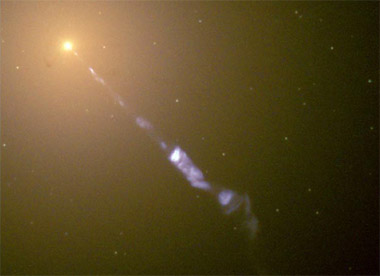
Scientists have observed jets of electric plasma but they call it a black hole:
Black hole outflows from Centaurus A detected with APEX.
Astronomers have a new insight into the active galaxy Centaurus A (NGC 5128), as the jets and lobes emanating from the central black hole have been imaged at submillimetre wavelengths for the first time. The new data, from the Atacama Pathfinder Experiment (APEX) telescope in Chile, which is operated by ESO, have been combined with visible and X-ray wavelengths to produce this striking new image.
Centaurus A is our nearest giant galaxy, at a distance of about 13 million light-years in the southern constellation of Centaurus. It is an elliptical galaxy, currently merging with a companion spiral galaxy, resulting in areas of intense star formation and making it one of the most spectacular objects in the sky. Centaurus A hosts a very active and highly luminous central region, caused by the presence of a supermassive black hole (see ESO 04/01), and is the source of strong radio and X-ray emission.
I hearby offer a million dollars to anyone who can see the black hole in this picture:
Black Holes Light Up.
But what you won't see -- even with a telescope -- black holes! In fact, Miller doesn't even use one to study black holes. He uses his computer.
So much for observation and the scientific method.
















